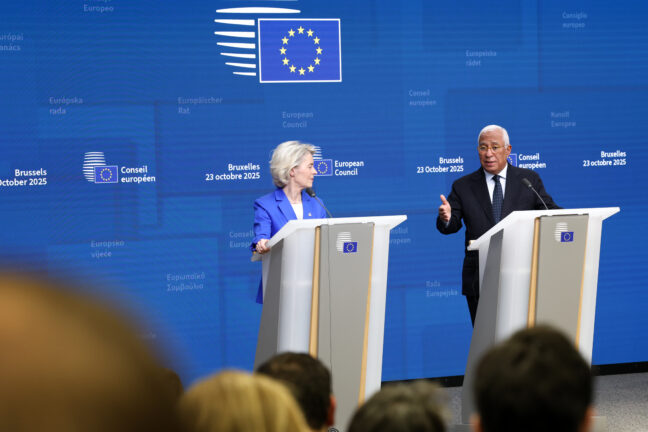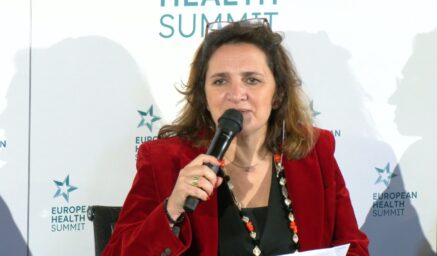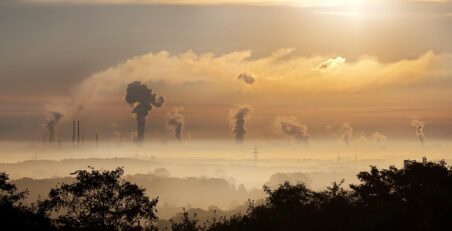The European Union‘s national leaders agreed to move ahead with setting a 2040 emissions target on Thursday. However, they left a crucial part of the deal—how much of the target can be bought through foreign carbon credits—for environment ministers to decide in November. This sharply reduces chances of a swift solution.
EU governments’ leaders decided to proceed with the controversial 2040 climate target despite pushback by a number of members states. However, the actual deal is still miles away as Thursday’s European Council left central details for environment ministers to handle when they meet on 4 November.
The EU is racing against time. Last month, the bloc missed a UN deadline to pass its climate target. It is now scrambling to approve the goal before world leaders gather at the COP30 climate summit in Brazil on 6-7 November. Supporters of the agenda view presenting an ambitious climate target in Brazil as important.
Focus on carbon credits
The principal sticking point is what share of the 90-per-cent emissions-cutting goal individual countries can meet by buying carbon credits from abroad. Thursday‘s postponement may, in fact, be tantamount to deferring the entire agenda in its current form to an unknown—perhaps unknowable—point in the future.
Any November compromise would, by definition, involve substantial concessions from member states with opposing views of the legislation. It is difficult to think of an environment minister accepting a climbdown (in November) his boss was not ready to approve (on Thursday).
You might be interested
The EU has been trying to pass a new target to cut net greenhouse gas emissions to 90 per cent (of a 1990 total) by 2040. This may put the Union on track for achieving the ultimate goal of net-zero emissions by 2050. Advocates of the policy, including scientists, see this as an essential step to avert the worst impacts of global warming. The 2040 target aims to keep the EU broadly between its existing—and legally binding—commitment to cut emissions by 55 per cent by 2030, and the 2050 target.
A revision clause
The leaders opened the door to watering down the target, reflecting some capitals’ concerns over how to finance the low-carbon transition, partially in view of actually pressing issues, such as the Ukraine war and geopolitical tensions, jointly threatening Europe’s prosperity. In their summit statement, they said the 2040 target should include a “revision clause” to potentially weaken it in future.
Brussels has already scaled back numerous sustainability policies this year, in an attempt not to burden the European economy. Its businesses are suffering, among other things, from climate-related overregulation. Brussels also aims to contain political pushback, both from EU governments and trade partners, such as the US.
(We) make sure that we achieve our objectives in the most cost-efficient way, and by guaranteeing that the transition contributes to a strong European industrial base. — António Costa, President of the European Council
Hearing the bloc’s top officials speak after Thursday’s meeting, a casual listener would have to be forgiven for thinking the mood was nothing short of celebratory. Presidents António Costa of the European Council and Ursula von der Leyen of the European Commission gave a late night press conference, deressing the ambiguous news in lofty language.
Pragmatic and flexible
“Europe is at the forefront of climate action, turning the challenge into economic opportunities, positioning itself as a leader in the technologies of the future,“ Mr Costa told reporters. „Today, we reaffirmed our commitment to the Paris Agreement, and also agreed that we need to be pragmatic and flexible in our strategy to make sure that Europe’s climate ambitions and the competitiveness of our economy, of our industries, go hand in hand and leave no one behind.“
Ms von der Leyen sounded a similar note: “We are on track for the climate target by 2030. And we have, of course, all agreed a clear target of climate neutrality by 2050.“
What we have discussed is the interim step, 2040, that is ahead of us. — Ursula von der Leyen, President of the European Commission
It was only later in their opening remarks that the actual outcome of the meeting became more apparent. Looking ahead to 2040, we are setting a clear and realistic path to achieve our climate targets “by making sure our transition is just and affordable for citizens and businesses (…) by following the principle of technological neutrality to make sure that we achieve our objectives in the most cost-efficient way, and by guaranteeing that the transition contributes to a strong European industrial base,“ Mr Costa said.
Reality, or betrayal?
“What we discussed is the interim step, 2040, that is ahead of us,“ Ms von der Leyen said halfway through her speech. “We have (…) introduced new flexibilities. So in short, more flexibility on how to reach the target, but to have a pragmatic and ambitious target at the same time.“
Asked what the new revision clause meant for the much-touted “balance between flexibility and predictability“, the Commission president said: “The 27 member states have different situations, so (it is not like) one size fits all. It gives them the possibility to reach the common target while choosing the delivery in the sectors that are the most suitable for that. So what was important for us did stay the course, 2050 climate neutrality. We are well on track, and now we have to define how we get in the most pragmatic but efficient way to the 2040 goal.“
Depending on the ideological bent of the listener, both presidents‘ statements could be construed either as a betrayal of the bloc’s green ambitions, or as economic reality finally catching up with Brussels.











